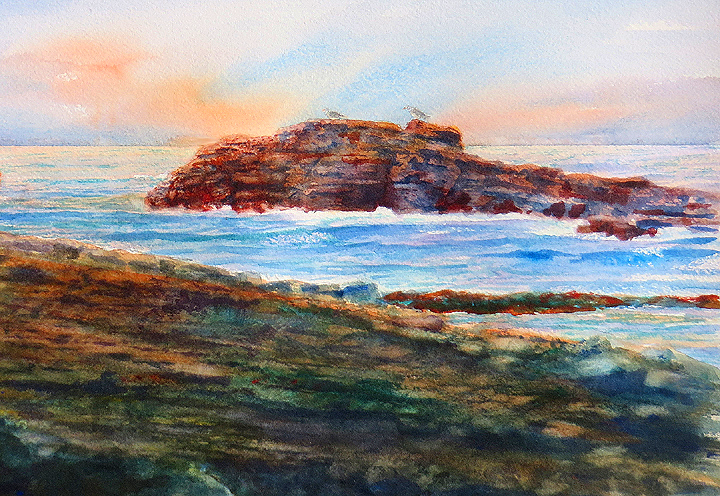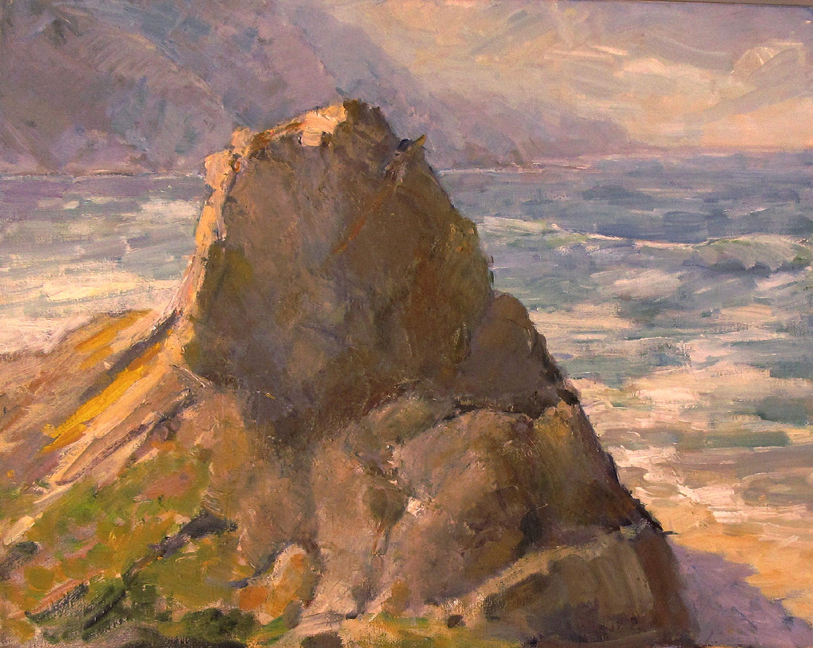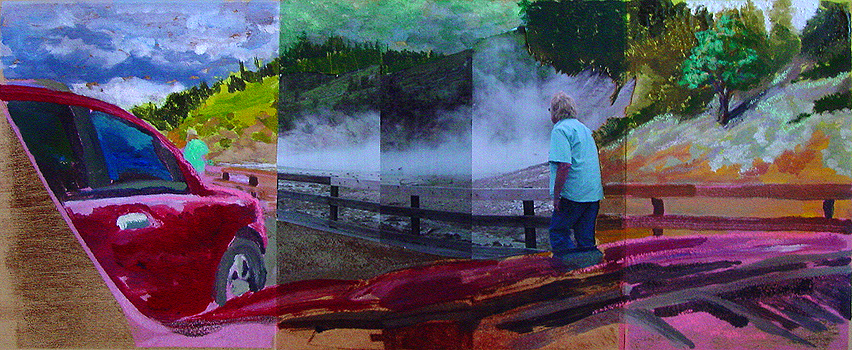
In 2011 I started on a journey that continues to this day. Below is an account of the start of this journey into a life time at the Shipley Nature Center in Huntington Beach
If you are interested in purchasing one of the pleinairs please contact me at reekersart@gmail.com and I let you know availability. Purchase price is $300 with free shipping.

The conceived of this series as a way to understand how nature changes with time here in Southern California, and how my learning of the scene changes with it. The goal is to have completed a series of 12 paintings that illustrate how art can be used as a learning tool and accomplish great esthetics when one understands and feels a vista. The agenda will be to go out the the Shipley Nature Center in Huntington Beach California and paint a plienaire painting (on-location) every month. It is important to paint from the same spot every time; Spot 13 as disignated by a marker at the Center. My intent is to finish this location completely with studio work to be performed in 2012.

This is a photo of the scene taken in July 2011, it gives you a general idea of the Spot 13. I choose the spot because I wanted a location that was foliage rich and not your ‘traditional’ landscape vista. In this way, I would have to respond to the changing of the natural foliage throughout the year.

This was the first painting at Shipley. It was an introduction to the scene and place. What I like about this painting is the light moving through the scene and the brushstroke are looser than my past pleinair paintings.

Trees are beginning to fill out though relatively spares. Some flower’s are beginning to bloom which was exciting and began to saturate my pallet. I like how things are beginning to warm up and those violet flowers.

A very strange day, the clouds were heavy and there was a constant change in light. The foreground continues to be expressly derived and the middle ground is looking more distinct and integrated.

This was a very melancholy day and rather dark. It seems the changing of the season is creating a level of anticipation in the plants. I learned a lot on this trip, more what not to do than what to do though. Having been more familiar with the scene I thought that I could blocked in the scene quickly and then free-form on details. I ended up trying not to muddy up the painting from the under paint. In any case I like the energetic mark making.

An absolute beautiful day; the best so far. The flowers buds look happy and ready to bloom, the foliage is filling out and finally the background trees are full and robust. The previous month taught me much about approaching the scene in a holistic manner. I was not worried about blocking in and allowed the under stain to peak through.

The scene is in full bloom! I was shocked by the growth. The Shipley Nature Center is a tendered preserve and I’m was very happy that nobody has removed any foliage. I’m starting to ‘get’ the background. My approach is becoming more abstract such that the approach is more in tune with values, forms and inter-relationships of color; definitely less than what the object “actual” is. Even though my approach is more abstract I would still like to capture a bit more detail in the foreground.

A hot and humid day which seems a little early for Huntington Beach, but the plants seem to like it. The scene is fully overgrown, almost to a fault. I would not have picked this spot if I seen what it looks like today. When I first saw the overgrowth, I thought, ‘How am I going to paint this’? In any case it turned out to be one of the most rewarding painting to date. I like to mark making that the scene demanded and rich variety of colors, inter-related shapes an dark deep values. I also like the depth of field.

This was a very gloomy day, with a heavy layer of fog. I painted from 9:00am to 12:00pm and by the time I was done the overcast had burned off. This presupposes the problem of huge light an color shifts while painting. Monet used to carry more than one canvas at a time to avoid this problem and at the same time capture the mood, but alas I had only one canvas. In any case, I like the distribution color and the force of nature that comes through.

This was actually a very pleasant date. Though the sun was out it was nice and cool. (a few days later it was very hot). The foliage is overgrown and the middle ground is nearly covered. This forced me to focus a bit more on the foreground objects. The big change continued to be the abstract way I’m approaching the application of paint; it is put on thick and direct. I’m also enjoying the mark making and freedom of the brush stroke. The background interplay between the sky and the trees was a challenge; I now understand the struggle Cezzane continued to work with throughout is life

This was an extremely hot day and difficult to paint in. I also forgot some items I like to work with, such as latex gloves and a trash bag, so my attitude was a little bent. In any case, the foliage again has grown, but added the challenge of painting objects very close to me as well as the background tree at a distance. The plants have turned a shade of white and there was little ground to be seen. The warmth of the ground helps to balance the coolness of the foliage, so the white had to be used as a warming element. The trees in the background are starting to change color (never changes much in southern California) and are losing their leaves, this allow a lot of light to poke through them causing a provision of lite shadows; beautiful

The landscape is coming around full circle now. When I think of my first painting from Spot 13, I remember the redness of the background trees and that is what I’m beginning to see today. The overgrowth is astonishing which is due to the Director letting it grow, (she was aware of my studies here and didn’t let anyone tend it) In any case, I wanted to keep the free brushwork but put a little effort into capturing the foreground details, and I believe I accomplished that goal fairly well. The painting has some interesting colors and the light of the day comes through. It seems a bit unbalanced though, this is due in large part to the concentrated areas versus the abstract areas. This will become very important when I start the studio painting.
I didn’t paint at the Shipley in December, but instead began to layout my large studio painting which I continue in a subsequent blog “Shipley Nature Center Saga – 2012”.
Thank You for reading this feel free to contact me if you have any questions or would like to purchase any of these paintings.
Cheers, Ronald Ray Reekers




































